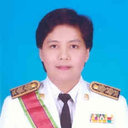Comparison of antimicrobial, antioxidant activities and total phenolic content of Antidesma thwaitesianum fruit extracts by different methods.
Słowa kluczowe
Abstrakcyjny
BACKGROUND
Antidesma thwaitesianum Mull. Arg. is a tropical fruit in Northeast Thailand and its fruits are used for soft drink and healthy food. The biological activities of extracts from Antidesma thwaitesianum using different extraction methods have not been reported.
OBJECTIVE
Extracts from Antidesma thwaitesianum using different extraction methods were tested for antibacterial and antioxidant activities as well as were determined for total phenolic content. Ten extracts were tested for antimicrobial activity by disc diffusion, MIC, and MBC methods. DPPH assay was used to test antioxidant activity and Folin-Ciocalteu 's reagent was used to determine total phenolic content.
RESULTS
The extract obtained by decocting residue after maceration process of dried marc (MRW) exhibited stronger antioxidative power (EC50 = 11.73 microg/ml) than BHT (EC50 = 13.36 microg/ml). This antioxidant activity was related to total phenolic content of 85.77 +/- 0.34 mg GAE/g. This extract also exhibited antimicrobial activity against Staphylococcus aureus (inhibition zone = 8 mm, MIC = 2.5 mg/ml). Moreover the extract obtained by macerating dried marc (MME) exhibited antimicrobial activity against Bacillus subtilis with the same MIC value of 10 mg/ml.
CONCLUSIONS
All of the extracts of Antidesma thwaitesianum had less potential for antimicrobial activity than Gentamicin and Amphotericin B. On the other hand, the water extract especially obtained by decocting residue after maceration of dry marc had good antioxidant power and the highest total phenolic content. Thus, such water extract should be recommended for a good source of natural antioxidants for commercial uses.


